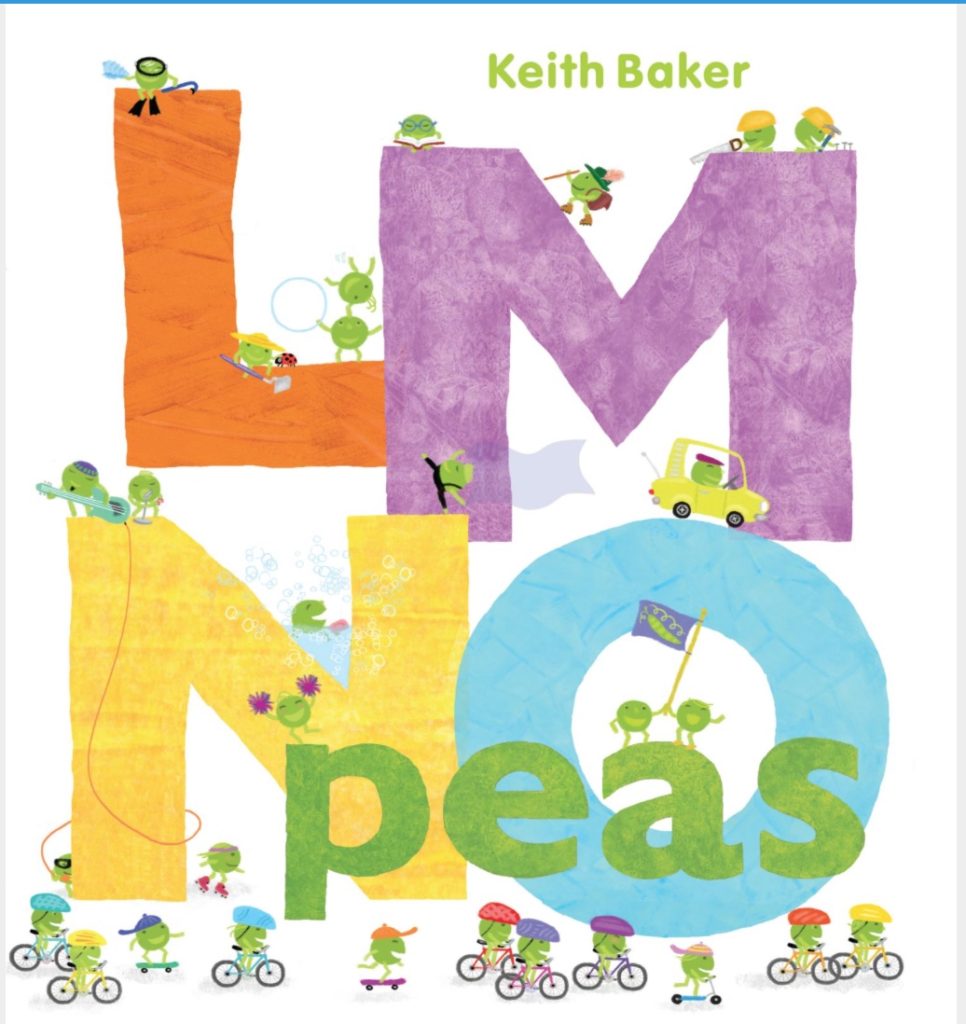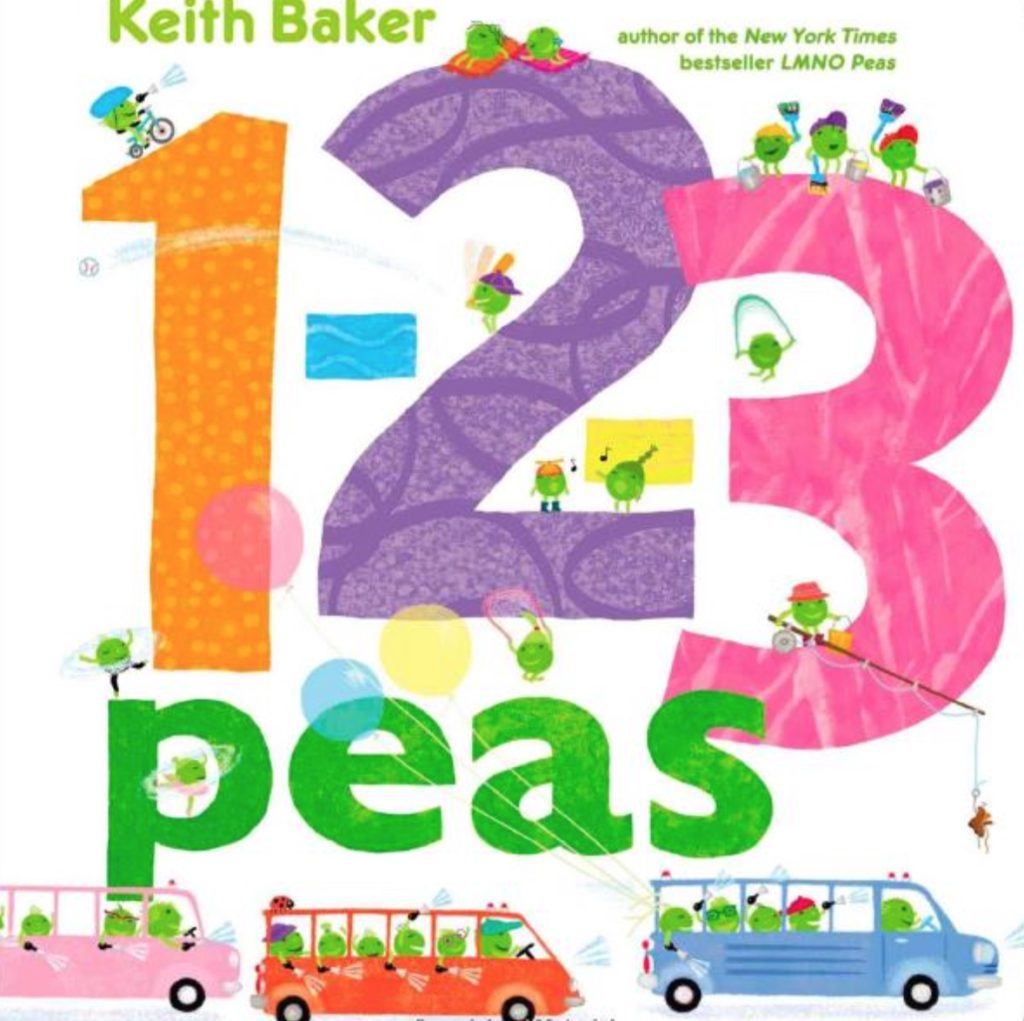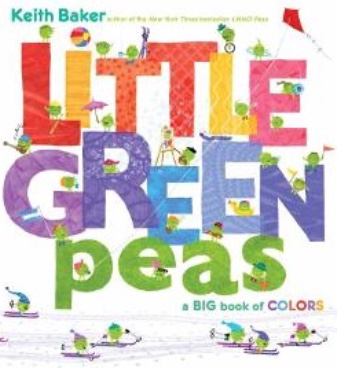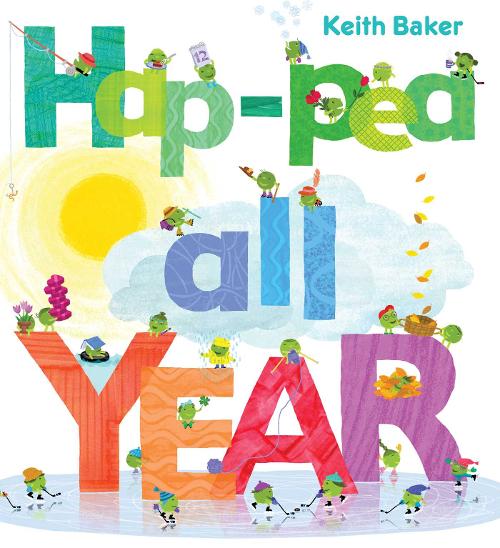2017 has proven to be a great year for books that are a combination of fun stories and terrific teaching tools rolled into one. Here are a few books recently published that teachers are going to love using in their classrooms.
*This post contains affiliate links. To read my full disclosure CLICK HERE.
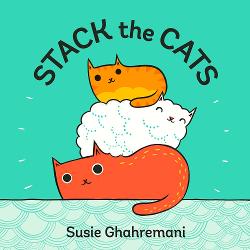 Stack the Cats by Susie Ghahremani, 2017
Stack the Cats by Susie Ghahremani, 2017
(Ages 3 – 6)
This seemingly simple picture book is filled with math concepts for young children. “One cat sleeps. Two cats play. Three cats? Stack!” As cats of different shapes, colors, and sizes are introduced, they stack on top of each other until they reach the number six then tumble creating two stacks of three. Cats continue to be added to the story and split into groups. This is a great way to illustrate how different numbers can be represented. For example, nine cats in a stack would be too many, so it can be divided up into three stacks of three. Eventually the cats exit the book to nap or play elsewhere reinforcing subtraction skills. The last page challenges readers, “How will you stack the cats?” providing the purrrfect jumping off point for teachers to bring this story alive and practice math concepts at the same time.
Teaching Ideas:
- The concept behind this book could easily be used in a flannel board activity for young learners. As cats are counted in the story, teachers could invite children to come up to the flannel board and add a cat creating their own groupings of the same number represented in the book. Subsequently, they can then remove the cats one by one to reinforce subtraction.
- This story could provide a great example for kinesthetic learners who may want to physically stack blocks or other items while adding, subtracting, grouping, multiplying, or dividing.
- Young children could also simply pick an object to stack and practice counting how many objects they can stack before it falls.
- Teachers could also challenge children to create their own books with drawings representing different formations of numbers.
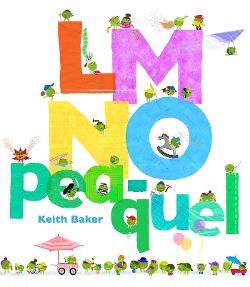 LMNO Pea-quel by Keith Baker, 2017
LMNO Pea-quel by Keith Baker, 2017
(Ages 3 – 6)
This is the fifth book in the series about an adorable group of anthropomorphic peas who playfully teach children about letters, numbers, colors, and months. In his latest book, Keith Baker returns to the alphabet but this time presents lower-case letters instead of upper-case letters as he did in LMNO Peas. Teachers and parents will love pairing these two books together to teach children both upper and lower-case letters. While the illustrations are as whimsical as ever, advanced vocabulary is introduced including words such as ichthyologists and optometrists. Children will love looking at the busy peas and also enjoy hunting for the hidden ladybug on each page. This is another winning offering from Keith Baker that helps bring the alphabet alive to children.
Teaching Ideas:
- Assign each student a letter and have them come up with words that begin with that letter and illustrate the page. Bring all of the pages together for a class alphabet book.
- Send students on an alphabet scavenger hunt to reinforce the correlation between upper-case and lower-case letters and practice identifying words that begin with each letter. Cut out upper-case and lower-case letters and hide one set of letters under or on something that begins with each letter. Then hand students the matching set of letters and challenge them to find the corresponding letter by identifying things in the room that start with that letter. Students can do this individually, in groups, or as a whole class with the teacher.
Check out the other great books in Keith Baker’s Pea series:
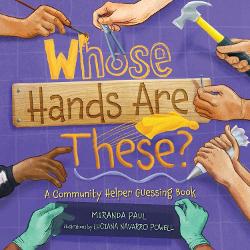 Whose Hands Are These? A Community Helper Guessing Book by Miranda Paul; illustrated by Luciana Navarro Powell, 2016
Whose Hands Are These? A Community Helper Guessing Book by Miranda Paul; illustrated by Luciana Navarro Powell, 2016
(Ages 3 – 7)
Playful rhymes and detailed illustrations provide clues to help children guess a myriad of community members. “Hoe and sow, these hands are soiled. Sweep and reap, these hands have toiled. In the barn, these hand are charmers. These hands belong to many… FARMERS!” Some children may not be familiar with all of the occupations like potter and architect, or they may be confused with the term physician instead of doctor, but overall this is an excellent tool to engage students during a unit on the community or occupations. There is also an author’s note in the back that describes each profession in more detail.
Teaching Ideas:
- A fun activity for students could be to make their own book of community members in their town or even the different types of teachers in their school as a back to school activity.
- My five-year-old loved this book and asked me to reread it to him several times. We then created our own guessing game during dinner giving clues about other community members we might see such as the town librarian and the mailman.
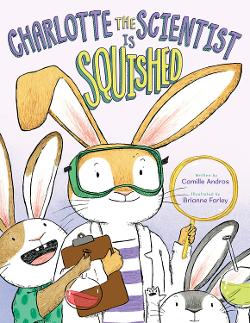 Charlotte the Scientist is Squished by Camille Andros; illustrated by Brianne Farley, 2017
Charlotte the Scientist is Squished by Camille Andros; illustrated by Brianne Farley, 2017
(Ages 4 to 8)
Charlotte is a serious scientist who is ready to conduct experiments. The only problem is that she has no room to run her tests because she is constantly surrounded by her many brothers and sisters. Being a proper scientist, she uses the Scientific Method to solve her problem. She identifies her question of how to create more space, forms her hypotheses, conducts her experiment, makes her observation, and reaches a conclusion. Charlotte’s first few experiments fail, but Charlotte’s persistence pays off as she finds solidarity after traveling to the moon. While she finds the space she needs, she also becomes lonely, so she revisits her initial hypothesis and creates her own lab out of her spaceship back on Earth. After a lot of hard work, Charlotte finally concludes that she can have the room she needs while still being close to her large family. Children will love this charming story and budding scientists will enjoy the last few pages that review the simplified version of the scientific method. Charlotte is an inspirational character who demonstrates creativity and persistence. My five-year-old son absolutely loves this charming story and there is no doubt that it will be popular among children, parents, and teachers alike.
Teaching Ideas
- Print a picture of Charlotte or use a stuffed animal that becomes squished or stuck somewhere in the classroom. Then, have students use the Scientific Method to identify a way to save Charlotte or the animal.
- Use this story as a writing prompt to encourage students to write about a time they encountered a problem and how they solved it.
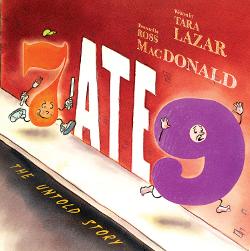 7 Ate 9: the untold story by Tara Lazar; illustrated by Ross MacDonald, 2017
7 Ate 9: the untold story by Tara Lazar; illustrated by Ross MacDonald, 2017
(Ages 5 – 10)
The author has combined the mysterious style of film noir with the classic joke, “Why was six afraid of seven? Because seven ate nine!” to create a comical tale that both children and adults will enjoy. The plot revolves around a Private “I” who takes on the case of the missing “9”. The number “6” claims that “7” is behind the disappearance. Leaving no number unturned, the Private “I” gets to the bottom of this numerical mystery.
Because this story is filled with hilarious puns, idioms, double entendre, dialogue, and components that make up the mystery genre, it is a terrific teaching tool to introduce or review any of the before-mentioned elements. Children will delight in pointing out the various word plays that appear on every page.
Teaching Ideas:
- Since there are examples of puns, idioms, or double entendre on almost every page, teachers could assign students a page from the book and have them make a list of the jokes using both the text and the illustrations.
- Students can create their own book of puns or idioms after using this book as an example.
- This story could serve as a writing prompt. A teacher can provide a choice between other well-known jokes and let the students create their own story using a joke of their choice as inspiration. Here are a few other classic jokes:
- Why did the chicken cross the road? To get to the other side!
- Knock Knock. Who’s there? Boo. Boo who? Don’t cry it’s only me!
- Use this book as a prompt for children to write their own mystery story.
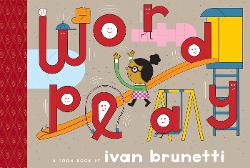 Wordplay by Ivan Brunetti, 2017
Wordplay by Ivan Brunetti, 2017
(Ages 6 – 9)
When a teacher assigns her students homework to identify compound words, a little girl has fun daydreaming about silly examples such as a handyman who is actually a hand, a football that is a ball in the shape of a foot, etc. This book is part of the Toon Book series, which specializes in creating basic graphic novels for young children. The illustrations appear in one to four large panels with the text in speech bubbles. Children will be excited to come up with their own examples of compound words after reading this comical book.
Teaching Idea:
- This short story is a great introduction to compound words and could be good inspiration for students to first identify their own examples of compound words and then create funny illustrations of them.
 May I Have a Word? By Caron Levis; illustrated by Andy Rash, 2017
May I Have a Word? By Caron Levis; illustrated by Andy Rash, 2017
(Ages 6 – 9)
This is such a fun book to discuss the difference between the sound “C” and “K” make. The story is told from the point of view of refrigerator magnets in the shape of letters. When “K” accuses “C” of stealing his sound, they enter into an argument for who has the better words. When “K” falls silent, “N” gets an idea and asks “K” to quietly stand next to him creating a story with a knight who gets knots in his knitting. The letters end up cooperating in the end providing a nice example of conflict resolution. The illustrations and comical text meld perfectly together to create a funny and clever way of teaching tricky spelling.
Teaching Ideas:
- Children often enjoy learning with tactile objects, so teachers could bring in refrigerator magnets and let students play and create their own words out of them.
- The refrigerator magnets in the story are seen holding up childish drawings of objects that begin with each letter. Create your own refrigerator door in the classroom and have students hang up drawings representing various letters.
- Challenge students to create a list of words that begin with “C” or “K” and then compare to see which letter is the easiest to come up with words.
- Generally, the rule is that the letter “C” appears first in words before the letters “A”, “O”, and “U” while “K” comes first before the letters, “I”, “E”, and “Y”. Teachers could provide children with a list of words removing the first letter and having the students fill in whether it is a “C” or a “K” for example, ____ut, ____ake, __id, etc.
- Teachers could create a picture representing words that begin with “C” or “K” and have the students cut them out and sort them.
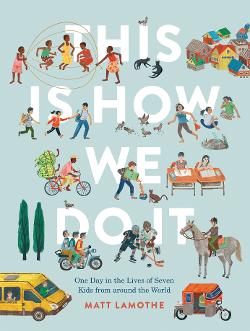 This is How We Do It: One Day in the Lives of Seven Kids from around the World by Matt Lamothe, 2017
This is How We Do It: One Day in the Lives of Seven Kids from around the World by Matt Lamothe, 2017
(Ages 5 – 10)
This brief glimpse into the life of seven children from countries including Uganda, Italy, Japan, India, Russia, Peru, and Iran provides readers with insight into how other people may live. The book follows the children as they prepare for a typical day starting with what their homes and families are like, what they eat for meals, an overview of their school day, and how they play. Their lives are broken down into sections that usually appear in panels on double page spreads that beautifully illustrate the short descriptions of the various aspects of the children’s lives. The book ends with one final spread featuring the moon and the stars with the simple text, “This is my night sky” signifying that no matter how different our lives may be, we all have something in common. Photographs of the real families the book is based on appear in the back along with a glossary of words in different languages and a map of where the children live.
Teaching Ideas:
- Use this book with social studies or geography units by having students identify on a map where the children in the book live.
- This book could be used as inspiration to get to know the students in the class better. Ask each child to illustrate aspects of their life and then create a class book with the same title, “This is How We Do It” in ____ class.
- Students can compare and contrast parts of their life with the children in the book.



